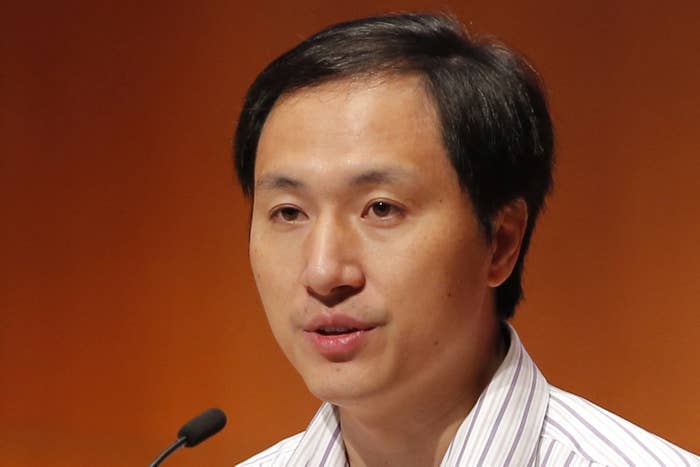
At a scientific summit in Hong Kong on Wednesday, the scientist who created the first genetically engineered babies revealed that a second woman is pregnant with a gene-edited embryo.
Jiankui He of China’s Southern University of Science and Technology jolted the world this week when the news broke that he had made the first gene-edited people. His ethically dubious experiment produced twin girls, Lulu and Nana, engineered to lack an HIV-susceptibility gene.
“There is another one, another potential pregnancy,” he told attendees at the Second International Summit on Human Genome Editing in a presentation about his work, reporting that the pregnancy was in its early stages, and not indicating whether it was one or two embryos. Seven couples were enrolled in the experiment, he said, which in all created 31 gene-edited human embryos for pregnancies. But the work, he said, is “now on hold due to the current situation.”
Both He and his colleague Michael Deem of Rice University in Houston are under investigation by their universities. He thanked his university at the session but said it was unaware of the experiment.
The Nobel Prize–winning biologist David Baltimore, who led questioning of He at the meeting, noted the experiment violated a voluntary international moratorium on gene-editing babies that the CRISPR field had adopted in 2015.
“I think there has been a failure of self-regulation by the scientific community because of the lack of transparency,” he said after He’s remarks in the extraordinary session at the University of Hong Kong, watched online by scientists worldwide.
Jiankui He's recorded talk and then Q&A from #GeneEditSummit #GeneEditingSummit is available (starts at 01:16:00) here https://t.co/WwFJyXqBjW Trascript: https://t.co/EPcSPsh5UI #CRISPR #crisprbabies https://t.co/h01D2XAMUx
Much of the presentation was a scientific recounting of how He’s team disabled a gene called CCR5 in mice, monkeys, and human embryos with CRISPR, the decade-old technology that allows for precise gene editing. He justified the effort by saying he had visited villages in China where 30% of the population has HIV, calling it medically necessary, a suggestion disputed by Baltimore and many HIV scientists.
National Institutes of Health chief Francis Collins joined other scientists in denouncing He’s team for creating genetically engineered children in secrecy. “This work represents a deeply disturbing willingness by Dr. He and his team to flaunt international ethical norms,” Collins said in a statement.
He said the team had checked the embryos, and later the twins, for unintended mutations to their DNA — such mistargeting has long been a key worry of CRISPR scientists. The team compared 80% to 95% of the twins’ entire genomes to their parents’ and saw one such mistargeting in one girl’s DNA, according to He, in a section of inactive genes. Mice subjected to the approach had healthy offspring through three generations, he said.
But other scientists raised questions about the ethics of recruiting parents from an HIV advocacy group (all the fathers in the couples are HIV-positive), and whether their approach for finding mistargeted genes was safe.
We now have more details about the human CRISPR work. And I'm sorry, but He Jiankui is a criminal as far as I'm concerned: https://t.co/7Rlw57VTLK
“Not good enough,” geneticist Gaetan Burgio of the Australian National University tweeted of the error-detection description from the presentation, echoing concerns from other researchers about the long-term health of the twins. Only one of the girl’s genes were altered in both pairs of her DNA, raising questions about imperfect editing.
“Without the results being published there is now no way to verify if intended or unintended changes were made,” CRISPR expert David Taylor of the University of Texas, Austin, told BuzzFeed News by email.
He’s team has submitted the data for peer review to a scientific journal.
